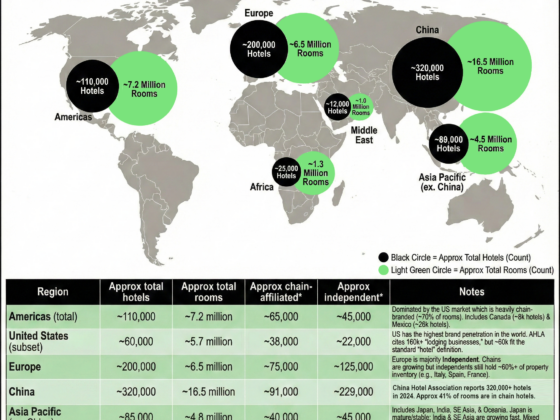
DALLAS, Texas—CBRE forecasted that revenue per available room (RevPAR) will grow modestly in 2025, driven by the continued outperformance of urban locations benefiting from increased group and business travel, as well as a projected rise in demand for drive-to and regional leisure destinations.
CBRE projected a 1.3 percent increase in RevPAR for 2025, with occupancy and average daily rate (ADR) rising by 14 basis points (bps) and 1.2 percent year-over-year, respectively. This represents slightly softer growth than had been anticipated in CBRE’s February forecast, which projected 2.0 percent RevPAR growth, based on a 21-bp boost in occupancy rates and a 1.6 percent increase in ADR.
CBRE’s forecast is predicated on an expected 1.4 percent increase in GDP growth this year (down from 2.4 percent annual growth as of the February forecast) and a 2.9 percent average inflation rate for 2025 (40 bps higher than anticipated in February). While the economy is expected to grow more slowly, growth will be strong enough to support the lodging industry’s performance.
“Economic and geopolitical uncertainties aside, several factors will drive RevPAR growth in 2025. These include an uptick in group and business travel, along with a weaker U.S. dollar and lower airfares, which may encourage domestic travelers to stay closer to home while boosting inbound international visitation to the U.S.,” said Rachael Rothman, CBRE’s head of hotel research and data analytics. “These trends are expected to particularly benefit urban hotels, regional resorts and drive-to destinations.”
Looking ahead, CBRE projects RevPAR growth in the range of 1.0 percent to 3.0 percent over the next few years. Several events, including the 2026 FIFA World Cup, the United States’ 250th anniversary in 2026, and the 2028 Summer Olympic,s will help drive demand, as will the opening of a theme park in Orlando and other new attractions. These developments, coupled with the enduring appeal of national parks, gateway cities, and domestic leisure destinations, are expected to sustain growth momentum, barring an unforeseen economic downturn.
“While the economy – and thus hotel demand – is expected to grow more slowly in the near term, supply growth is also likely to decelerate due to increased construction costs, higher financing costs, and a tight labor market,” said Michael Nhu, senior economist and CBRE’s head of global hotels forecasting. “This will enhance pricing leverage for hotel operators over the long term and benefit existing assets by increasing replacement costs.”
CBRE expects supply growth to average 0.8 percent annually over the next four years, which is half of the industry’s historical average. A drop in demand or a sharper-than-expected spike in construction costs could cause supply growth to decelerate further.
CBRE has included 11 new leisure-oriented markets in its latest forecast, including Boulder and Colorado ski markets, California wine country, the Florida Panhandle, and Utah national parks. These additions reflect recent shifts in travel trends and provide insights into emerging opportunities.






